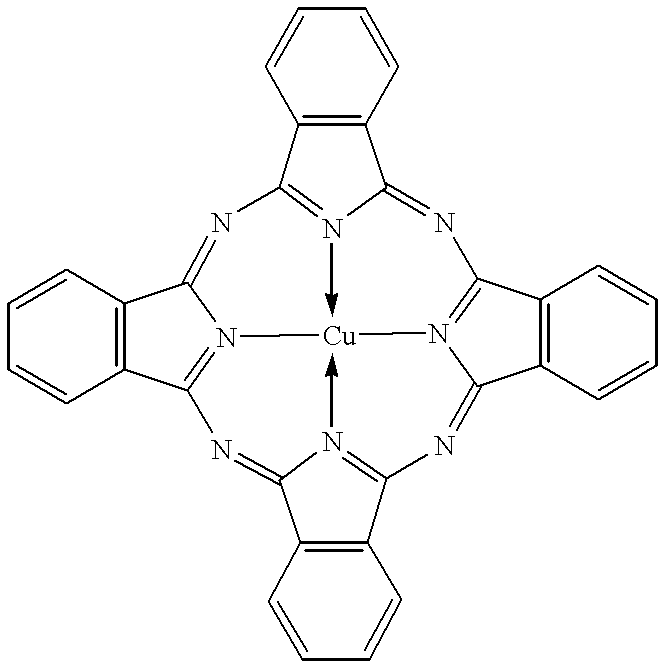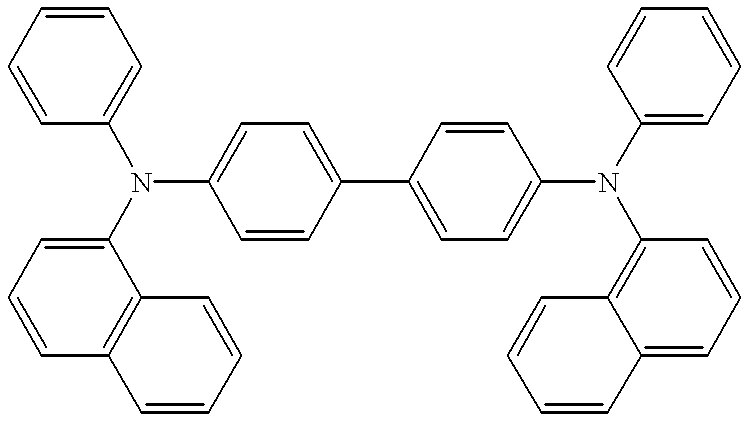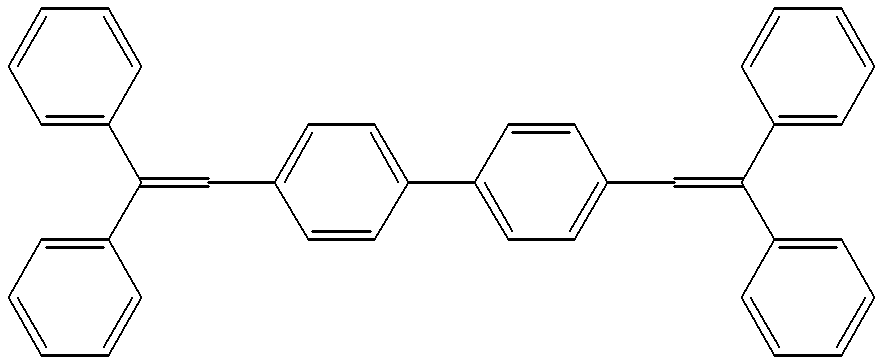Fluorescent conversion filter and color display device using the same
a technology of fluorescent conversion filter and color display device, which is applied in the direction of optical radiation measurement, identification means, instruments, etc., can solve the problems of imperfect photo-resist, difficulty in using organic light emitting elements for color display, and high cost, and achieve excellent display performance and facilitate fine pattering
- Summary
- Abstract
- Description
- Claims
- Application Information
AI Technical Summary
Benefits of technology
Problems solved by technology
Method used
Image
Examples
first embodiment (
E1)
The first embodiment of the invention will be explained below with reference to FIG. 1.
Fabrication of a light absorption film
A red filter material is used to spin coating a glass substrate (5) which has a dimension of 143.times.112.times.1.1mm.sup.3. An example of a suitable red filter material is "Color Mosaic CR-7001" which is supplied from FUJIFILM OLIN CO., LTD. The coated red filter material layer is patterned using photolithography methods to produce a red filter layer. The resulting red filter layer (light absorption film 2) consists of stripes 1 gm thick, 0.33 mm wide and spaced apart by 1.2 mm. As shown in FIG. 3, the absorbance of the light absorption film (2) is greater than 1 in the wavelength region between 450 nm and 520 nm.
Fabrication of colored filters
A blue filter material and a green filter material are coated by spin coating a substrate (5). An example of a suitable blue filter material is "Color Mosaic CB-7001" which is supplied from FUJIFILM OLIN CO., LTD. An...
second embodiment (
E2)
The second embodiment of the present invention is formed in a similar manner as the first embodiment. First, a fluorescent conversion film (1) is formed on a light absorption film (2) by spin-coating a transparent photo-polymerizing resin (i.e. "SP-1509" supplied from Showa Highpolymer Co., Ltd.) containing Coumarin 7, Rhodamine 6G and Basic violet I1. The coated transparent photo-polymerizing resin in then dried in an oven. The fluorescent conversion film (1) is patterned with a striped pattern using the contact exposure technique which projects light from a high pressure mercury lamp through a mask to expose the fluorescent conversion film (1). The striped pattern consists of 0.33 mm wide stripes that are spaced apart by 1.2 mm. The exposed stripe pattern is developed with an aqueous alkaline solution. The obtained laminate is dried in an oven. The laminate results in a 7.mu.m thick fluorescent conversion filter consisting of a 1 .mu.m thick light absorption film (2) and a 6.mu...
third embodiment (
E3)
The third embodiment of the present invention is formed in a similar manner as the first embodiment. First, a fluorescent conversion film (1) is formed on a light absorption film (2) by spin-coating a transparent photo-polymerizing resin (i.e. "V-240OPET Series" which is supplied from Nippon Steel Chemical Co., Ltd.) containing Coumarin 7, Rhodamine 6G and Basic violet 11. The coated transparent photo-polymerizing resin in then dried in an oven. The fluorescent conversion film (1) is patterned with a striped pattern using the contact exposure technique which projects light from a high pressure mercury lamp through a mask to expose the fluorescent conversion film (l). The striped pattern consists of 0.33 mm wide stripes that are spaced apart by 1.2 mm. The exposed stripe pattern is developed with an aqueous alkaline solution. The obtained laminate is dried by heating the laminate in an oven The laminate results in a 7.mu.m thick fluorescent conversion filter consisting of a 1 .mu....
PUM
 Login to View More
Login to View More Abstract
Description
Claims
Application Information
 Login to View More
Login to View More - R&D
- Intellectual Property
- Life Sciences
- Materials
- Tech Scout
- Unparalleled Data Quality
- Higher Quality Content
- 60% Fewer Hallucinations
Browse by: Latest US Patents, China's latest patents, Technical Efficacy Thesaurus, Application Domain, Technology Topic, Popular Technical Reports.
© 2025 PatSnap. All rights reserved.Legal|Privacy policy|Modern Slavery Act Transparency Statement|Sitemap|About US| Contact US: help@patsnap.com



